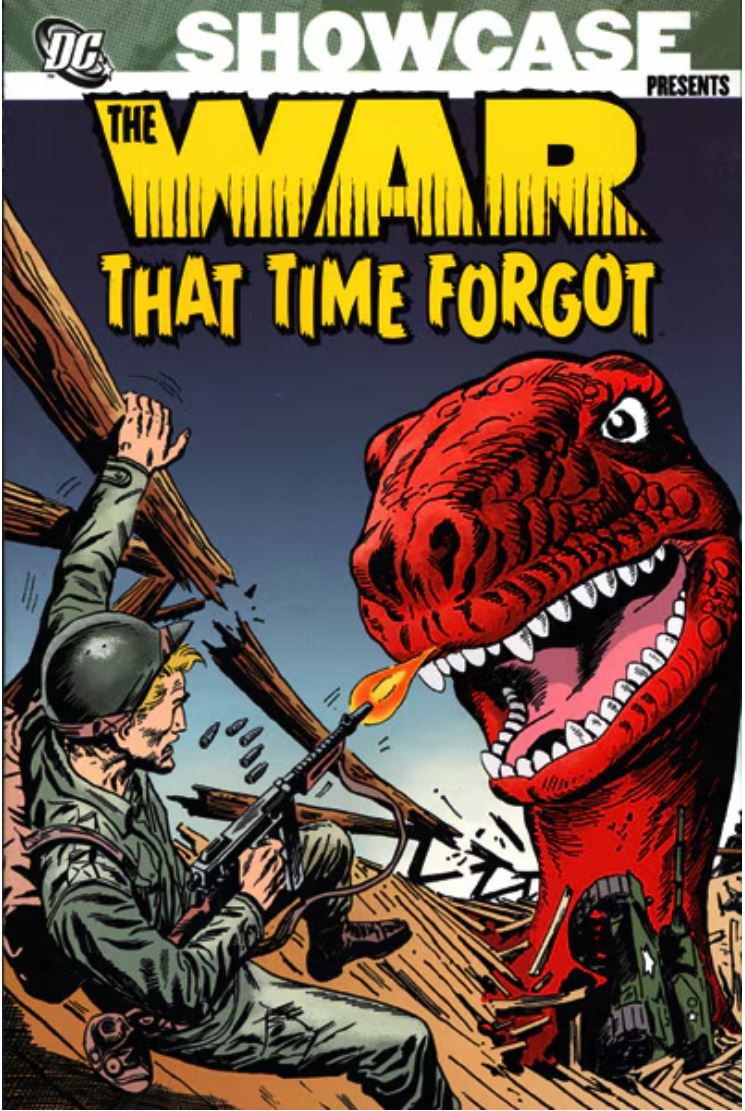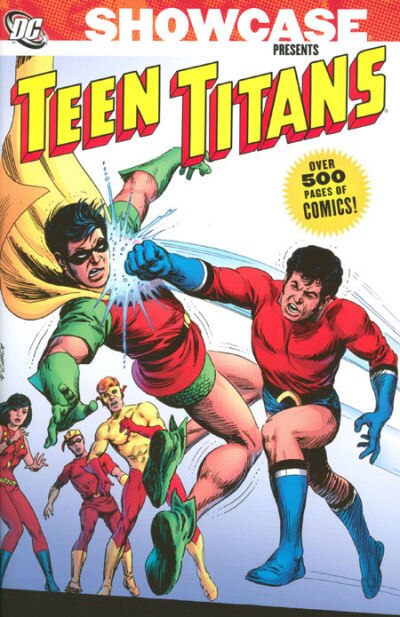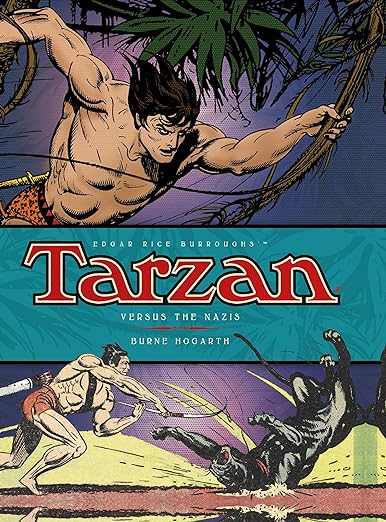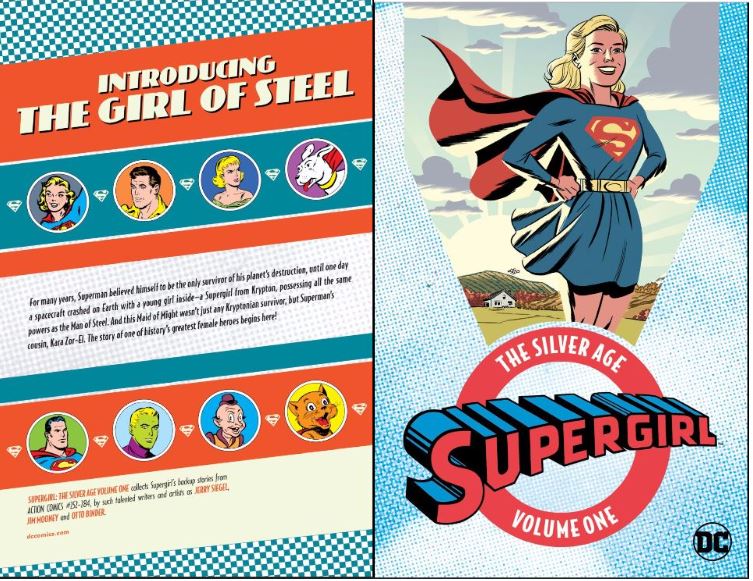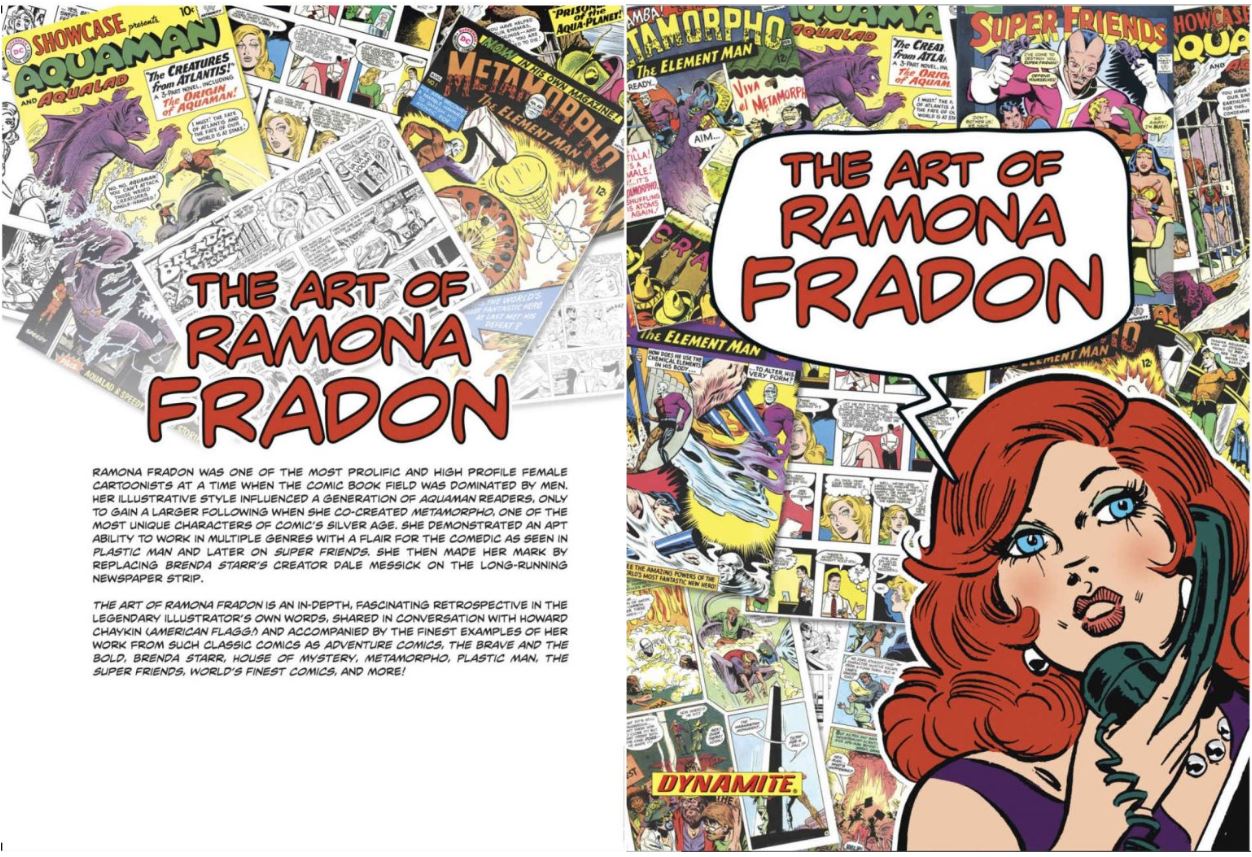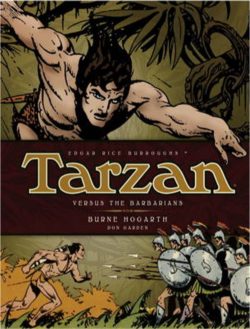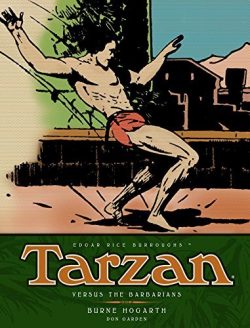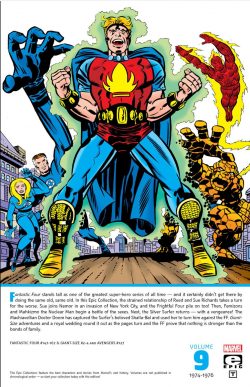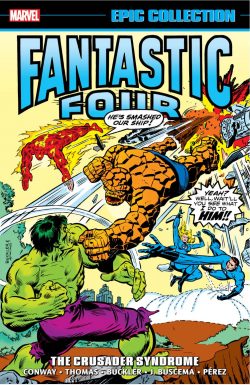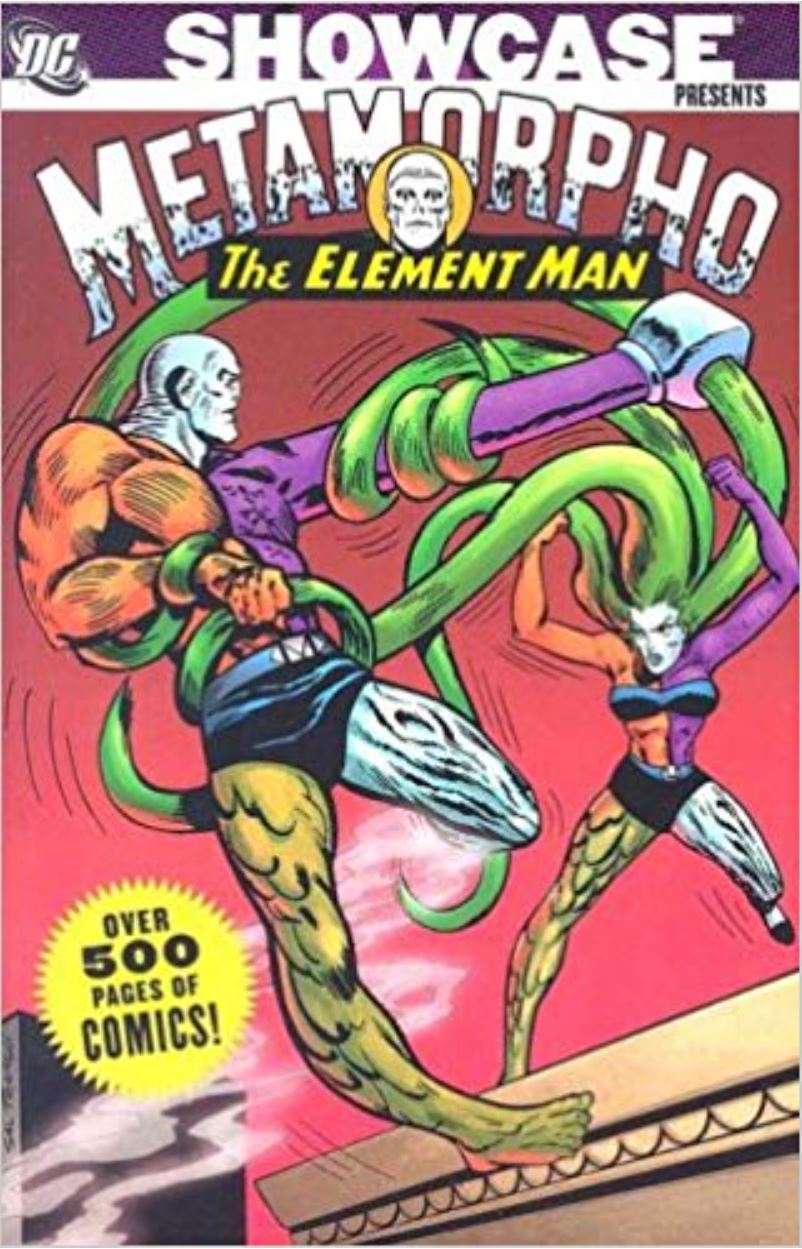
By Cary Bates, Bob Haney, Robert Kanigher, Denny O’Neil, Mike Friedrich, Curt Swan, Ross Andru, Dick Dillin, Mike Esposito & various (DC Comics)
ISBN: 978-1-4012-3736-3 (TPB)
For decades Superman and Batman were quintessential superhero partners: the “World’s Finest team”. The affable champions were best buddies as well as mutually respectful colleagues, and their pairing made sound financial sense since DC’s top heroes could happily cross-pollinate and cross-sell their combined readerships.
This fourth monochrome compendium re-presents cataclysmic collaborations from the dog days of the 1960’s into the turbulent decade beyond (World’s Finest Comics #174-202, spanning March 1968 to May 1971), as shifts in America’s tastes and cultural landscape created such a hunger for more mature and socially relevant stories that even the Cape & Cowl Crusaders were affected – so much so in fact, that the partnership was temporarily suspended: sidelined so that Superman could guest-star with other icons of the DC universe.
However, after a couple of years, the relationship was revitalised and renewed with the “World’s Finest Heroes” fully restored to their bizarrely apt pre-eminence for another lengthy run until the title was cancelled in the build-up to Crisis on Infinite Earths in 1986.
The increasingly grim escapades begin with ‘Secret of the Double Death-Wish!’ by Cary Bates, Pete Costanza & Jack Abel from #174 (cover-dated March 1968, so actually the last issue of 1967) wherein mysterious voyeurs seemingly kidnap the indomitable heroes and psychologically crush their spirits such that they beg for death.
Smart and devious, this conundrum was definitely old-school, but a New Year saw subtle changes as, post-Batman TV show, the industry experienced superheroes waning in favour of war, western and especially supernatural themes and genres. Thus 1968 saw radical editorial makeovers at National/DC. Edgier stories of the costumed Boy Scouts began as iconoclastic penciller Neal Adams started turning heads and making waves with his stunning covers and two spectacularly gripping Cape & Cowl capers. It began in WFC #175 with ‘The Superman-Batman Revenge Squads!’, scripted by Leo Dorfman and inked by Dick Giordano. The story details how an annual contest of wits between the crimebusting pals is infiltrated by alien and Terran criminal alliances intent on killing their foes whilst they are off guard.
Issue #176 featured beguiling thriller ‘The Superman-Batman Split!’ (Bates, Adams & Giordano). Ostensibly just another alien mystery, this twisty little gem has a surprise ending for all and guest stars Robin, Jimmy Olsen, Supergirl and Batgirl, with the artist’s hyper-dynamic realism lending an aura of credibility to the most fanciful situations, and ushering in an era of gritty veracity to replace the anodyne and frequently frivolous Costumed Dramas.
Jim Shooter, Curt Swan & Mike Esposito also edged closer towards constructive realism with #177’s ‘Duel of the Crime Kings!’ as Lex Luthor again joins forces with The Joker. This go-round the dastardly duo used time-busting technology to recruit Benedict Arnold, Baron Hieronymus Carl Friedrich von Munchausen and Leonardo Da Vinci to plan crimes for them, only to then fall foul of the temporally displaced persons’ own unique agendas…
WFC #178 began a 2-part Imaginary Tale with ‘The Has-Been Superman!’ (Bates, Swan & Abel) which has the Action Ace lose his Kryptonian powers and subsequently struggle to continue his career as Batman-style masked crimebuster Nova. More determined than competent, he soon falls under the influence of criminal mastermind Mr. Socrates – a brainwashed stooge programmed to assassinate Batman…
The moody suspense saga was interrupted by #179 – a regularly scheduled, all-reprint 80-Page Giant featuring bright-&-shiny early tales from the team’s formative years – represented in this collection by its striking Adams cover – before the alternate Earth epic concludes in #180 with ‘Superman’s Perfect Crime!’ courtesy of Bates and new regular art team Ross Andru & Mike Esposito.
During the late 1950s when the company’s editors cautiously expanded the characters’ continuities, they learned that each new tale was an event which added to a nigh-sacred canon, and that what was printed was deeply important to the readers – but no “ideas man” would let all that aggregated “history” stifle a good plot situation or sales generating cover.
Thus “Imaginary Stories” were conceived as a way of exploring non-continuity plots and scenarios, devised at a time when editors knew that entertainment trumped consistency and fervently believed that every comic read was somebody’s first and – unless they were very careful – potentially their last…
Bates, also scripted #181’s ‘The Hunter and the Hunted’ wherein an impossibly powerful being from far away in space and time relentlessly pursues and then whisks away the heroes to a world where they were revered as the fathers of the race, whilst in the next issue ‘The Mad Manhunter!’ depicted a suspenseful shocker which found Batman routinely rampaging like a madman due to a curse. Naturally, what seemed was far from what actually was…
Another massive con-trick underscored #183’s Dorfman-scripted drama as apes from the future accused the Man of Steel of committing ‘Superman’s Crime of the Ages!’ and Batman and Robin had to arrest their greatest ally. In WFC #184 Bates, Swan & Abel concocted another bombastic Imaginary Tale which revealed ‘Robin’s Revenge!’, tracing the troubled teen sidekick’s progress after Batman is murdered, with Superman powerless to assuage the Boy Wonder’s growing hunger for revenge…
Robert Kanigher joined old collaborators Andru & Esposito from #185 onwards, detailing the bizarre story of the ‘The Galactic Gamblers!’ who press-ganged Superman, Batman, Robin and Jimmy to their distant world to act as living stakes and game-pieces in their gladiatorial games of chance, before taking the heroes on a time-tossed 2-part supernatural thriller.
In #186, anecdotal stories of Batman’s Colonial ancestor “Mad Anthony Wayne” prompt the heroes to travel back to the War of Independence where the Dark Knight is accused of infernal deviltry as ‘The Bat Witch!’ and sentenced to death. Of course, it’s actually the Action Ace who is possessed to become ‘The Demon Superman!’ in the follow-up before all logic and sanity are restored by exorcism and judicious force of arms…
After the cover to World’s Finest #188 – another reprint Giant – Bates returns in #189 with a (still) shocking 2-parter opening in ‘The Man with Superman’s Heart!’ wherein the Caped Kryptonian crashes from space to Earth and is pronounced Dead On Arrival. As per his wishes, many of his organs are harvested (this was 1969 and still purely speculative fiction at that time) and bequeathed to worthy recipients. When Batman refuses to accept any organic bequests, Superman’s eyes, ears, lungs, heart and hands (yes, I know… just go with it) are simply stored …until Luthor steals them to auction off to gangland’s highest bidders…
Concluding episode ‘The Final Revenge of Luthor!’ sees a quartet of crooks running wild as the transplants bestow mighty powers Batman and Robin cannot combat, but the tragedy has a logical – if rather callous – explanation as the real Man of Steel appears to save the day…
Bates, Andru & Esposito then explore ‘Execution on Krypton!’ in WFC #191, as incredible events on Earth lead Superman and Batman back to Krypton before Kal-El was born. Here he learns how his revered parents Jor-El and Lara became radicalised college lecturers, and why they were teaching their students all the subversive tricks revolutionaries needed to know…
Bob Haney joined Andru & Esposito from #192 for a dark, Cold War suspense thriller as Superman is captured by the Communist rulers of Lubania and held in ‘The Prison of No Escape!’ When Batman tries to bust him out, he too is arrested and charged with spying by sadistic Colonel Koslov, utilising brainwashing techniques to achieve ‘The Breaking of Superman and Batman!’ in the next issue. However, the vile totalitarian’s torturous treatment disguises an insidious master-plan which the World’s Finest almost fail to foil…
Popular public response to Mario Puzo’s phenomenal novel The Godfather most likely influenced Haney, Andru & Esposito’s next convoluted 2-parter. WFC #194 sees Superman and Batman undercover ‘Inside the Mafia Gang!’ and hoping to dismantle the organisation of “Big Uncle” Alonzo Scarns from within. Sadly, a head wound muddles the Gotham Gangbuster’s memory and Batman begins to believe he is actually the “Capo di Capo Tutti”, condemning Robin and Jimmy to ‘Dig Now, Die Later!’ Helplessly watching, Superman is almost relieved when the real Scarns shows up…
An era ended with #196 as ‘The Kryptonite Express!’ (Haney, Swan & George Roussos) details how a massive meteor shower bombards the US with tons of the deadly green mineral. After countless decent citizens gather up the Green K, a special train is laid on to collect it all and ship it to somewhere it can be safely disposed of. Superman is ordered to stay well away whilst Batman takes charge of the FBI operation, but they have no idea master racketeer and railway fanatic K.C. Jones has plans for the shipment and a guy on the inside…
After #197 – another all-reprint Superman/Batman Giant – a new era launches (for the entire experiment you should see World’s Finest: Guardians of Earth please link to 2021, June 3rd) as the Fastest Man Alive teams with the Man of Tomorrow. DC Editors of the 1960s generally avoided questions like who’s best/strongest/fastest for fear of upsetting a portion of their tenuous and assuredly temporary fanbase, but as the tide turned against superheroes in general and upstart Marvel began making serious inroads into their market, the notion of a definitive race between the almighty Man of Steel and Scarlet Speedster became increasingly enticing and sales-worthy.
They had raced twice before (Superman #199 and Flash #175 – August & December 1967) with the result deliberately fudged each time, but when they met for a third round a definitive conclusion was promised – but please remember it’s not about the winning, but only the taking part. As World’s Finest became a team-up vehicle for Superman, Flash again found himself in contrived competition. ‘Race to Save the Universe!’ and conclusion ‘Race to Save Time!’ (#198-199, November and December 1970, by Denny O’Neil, Dick Dillin & Joe Giella) up the stakes as the high-speed heroes are conscripted by the Guardians of the Universe to circumnavigate the cosmos at their greatest velocities thereby undoing the rampage of mysterious Anachronids: faster-than-light creatures whose pell-mell course throughout creation is unwinding time itself. Little does anybody suspect Superman’s oldest enemies are behind the entire appalling scheme…
In anniversary issue #200, Mike Friedrich, Dillin & Giella focus on brawling brothers on opposite sides of the teen college scene, abducted with unruly youth icon Robin and “Mr. Establishment” Superman to a distant planet. Here undying vampiric aliens wage eternal war on each other in ‘Prisoners of the Immortal World!’ Green Lantern then pops in for #201, contesting ‘A Prize of Peril!’ (O’Neil, Dillin & Giella) which will give either Emerald Gladiator or Man of Steel sole jurisdiction of Earth’s skies.
Batman returns for a limited engagement in #202. The final tale in this compilation, O’Neil, Dillin & Giella’s ‘Vengeance of the Tomb-Thing!’ sees archaeologists unearth something horrific in Egypt as Superman seemingly goes mad: attacking his greatest friends and allies. A superb ecological scare-story, this tale changed the Man of Tomorrow’s life forever…
These are gloriously smart, increasingly mature comic book yarns whose dazzling, timeless style informed the evolution of two media megastars, which still have the power and punch to enthral even today’s jaded seen it-all audiences. The contents of this titanic team-up tome are a veritable feast of witty, gritty, pretty thrillers packing as much punch and wonder now as they always have. Utterly entrancing adventure for fans of all ages!
© 1968, 1969, 1970, 1971, 2012 DC Comics. All Rights Reserved.

